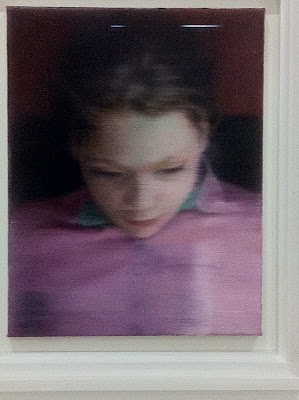So, as this show is about light and dark; claire/obscure; chiaroscurro, whatever, one could deduce that 200 kilometres is the distance that separates light from darkness.
In fact the organisers of the twin shows, which imply a major transatlantic collaboration involving multiple museums on both sides of the pond, have decided, rather tritely, to divide the subject matter along a north/south axis. Hence, if you want to see Caravaggio himself and his Italian or other southern European followers, you must go south to Montpellier. And if Toulouse, also in southern France but not quite so far down, is your port of call (like me today) you will see only Dutch and Flemish paintings and drawings. Which is fine, but the posters and stuff advertising the show do not quite lead one to expect this type of restriction. So I found the show (at least the part I saw) to be interesting, but a bit of a let-down. I am sure that it was done this way for financial reasons, and it is a pure and rather mean calculation that inevitably frustrates the art-lover. It would have been far better to put it all together and move it from one place to another on different dates.
So what did I learn at the Toulouse part of the show?
That Caravaggio's real name was Michelangelo Merisi. And the liaison with that other Michelangelo, Buonarote, is perhaps not totally fortuitous when one thinks of the scuptural power of Caravaggio's painting of the human body. I also learnt that the man painted directly onto his canvases, without much drawing to outline his work, just a few marks. Painting as drawing, in a sense. But then I didn't see any real Caravaggio's today, so I cannot vouch for any direct impressions gleaned to back this up.
Who were the northern painters, from Utrecht (mostly) and Flanders, that most impressed me in this Toulouse part of the show? Bloemaert, Finson, Ter Bruggen, Dirck van Baburen, Jan van Bijert, Jan Lievens and Johann Liss. Never heard of them? Or some of them? Never mind, here are a few samples :
Abraham Bloemaert, the Fluteplayer (not in the show, but it makes the point of his allegiance to Caravaggio better than the painting shown there!)
Finson (or Finsonius), a selfportrait. Again, curiously, not in the show although the quotation in the pose refers directly to the painting on the left by Caravaggio called Bacchus unwell. What were the curators thinking about or couldn't they get hold of this painting ?
Ter Bruggen, the lute player. They did get this one in the show as it came from Bordeaux, not too far away.
Just to continue the musical theme, this one (once again, not to be seen in the show, although there were some good works from this painter) by Dirck van Baburen and called The singer.
This is a poor quality reproduction of a work by Jan van Bijert, called, for obvious reasons, "The Go-between". The better quality image available needed rights to be paid and I cannot afford that! It is quite clear what is going on here but it is also perhaps interesting, for wine paople, to note that the wine in the glass held up on the left is clearly pink in colour, adding an element of proof that most wines were either pink or white until the late 17th or early 18th century and only then did they become, exceptionally, red. Oh, and to give the exhibition organisers their due, they managed to get this one in the show!
Maybe I will return to this subject of light and shade in painting later....
For the moment, it all looks a bit like sex, wine and music (no rock n' roll then)





.JPG)
.JPG)
.JPG)






































